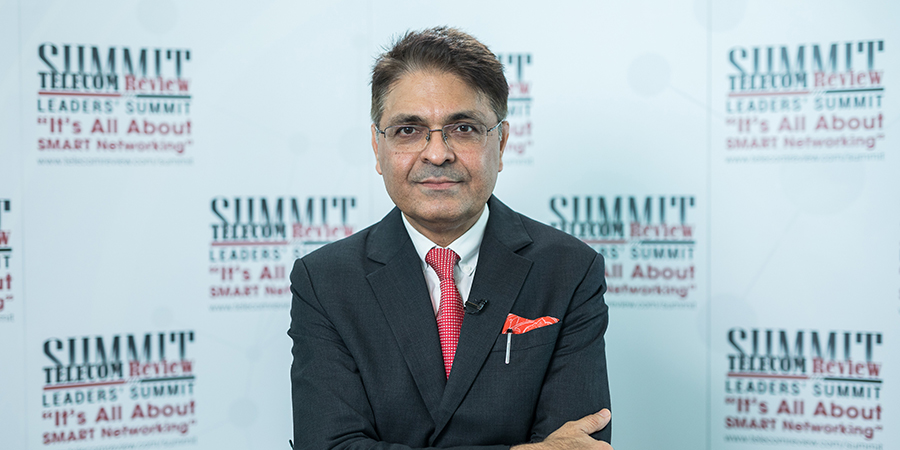In order to know more about SES’ actions and plans as 2020 comes to an end, Telecom Review spoke to Imran Malik Khan, Global VP Fixed Data, SES Networks discussed the role that the satellite operator has been playing during the pandemic and how it plans to cater to customers’ needs in the aftermath.
How has COVID-19 impacted your customers, and how have you responded?
The economic, social and technological challenges presented by the pandemic has severely impacted many nations. Connectivity is a crucial factor given the restrictions on movement enforced by lockdowns, and SES is supporting companies, communities and NGOs with connectivity services. Internet usage has shifted from the office to the home as the school classroom has moved online and entertainment has been restricted to the home – resulting in in demand from more end users in suburbs and rural areas.
To support our customers, our priority was to ensure that our own operations are running seamlessly so that we are able to provide uninterrupted customer service. To do this, we have implemented and maintained a business continuity management system in accordance with the ISO 22301-2019 international standard.
In addition to this, our business never sleeps; we have implemented rotating shifts for our operations teams, either via remote secure connections from home or operating regular services onsite. All this ensures that our customers can continue to rely on us for critical content delivery and connectivity services.
Operations aside, we have also become more flexible in the way we support our customers. Where possible, SES has offered temporary capacity increases, in increments of just a few months at a time.
It’s worthwhile noting that satellite does not primarily serve the rural areas. For SES, our unique O3b Medium Earth Orbit (MEO) constellation has been successful in delivering connectivity to urban areas in landlocked Africa and central Asia. Similarly, our O3b service has been the primary source of Internet connectivity for Pacific Island nations.
During this period, SES has been able to dedicate teams to accelerate the delivery of satellite communications services, augment or provide back-up with additional temporary capacity and network services, and to leverage their direct connectivity to provide reliable, secure, optimised cloud services directly to their customers’ network.
What trends do you foresee in 2021?
COVID-19 has left a permanent mark on the world, the post-COVID world will never be the same again – the way we live and do things will forever be changed. COVID has catapulted digital transformation into a new era and the satellite industry is well-placed to facilitate the shifts in behaviour as people become more reliant on technology. Satellite connectivity is an enabler in overcoming some of the challenges presented by working remotely, this shift to working online will have unprecedented effects on our industry.
In 2021, demand for new internet-of-things (IoT) applications, technologies, and solutions will be driven by connected healthcare, smart offices, remote asset monitoring, and location services, all powered by a growing diversity of networking technologies.
The strongest growth of capacity demand is expected to come from emerging markets of Latin America and Asia-Pacific. While the bandwidth requirements of mobile backhaul sites are growing, new installations have been put on hold due to supply chain disruptions and lockdowns. Similarly, the rollout of 5G has slowed down by COVID-19 in 2020 but may pick up in 2021.
By the end of 2020, more than 50 percent of enterprise workloads and data are expected to be in a public cloud (Flexera 2020). In response to this increase in demand, SES is ramping up its offering in a huge way by launching our next-generation MEO constellation, O3b mPOWER, and Ka-Band HTS geostationary satellite, SES-17 for the America’s, in 2021.
O3b mPOWER is the most high-performance and flexible network communications system ever built for space. It will improve upon today’s O3b MEO system in terms of throughput and efficiency, delivering connectivity services ranging from 50Mbps to multiple gigabits per second to a single terminal. The new system will allow telcos, MNOs, governments, enterprises, airlines, cruise operators, shipping vessels, and more to experience unmatched connectivity, even on the go.
How does SES intend to meet the growing connectivity needs of customers in the years to come?
With digital inclusion a high priority for a lot of countries, SES is eager to leverage satellite’s superpower -- reach – to help achieve this goal. Which is why we are also looking into rolling our cellular backhaul service and Wi-Fi hotspots services in order to address universal service obligation requirements. These managed mobile backhaul and managed enterprise solutions would be offered worldwide on our O3b mPOWER system and also the SES-17 satellite. O3b mPOWER is well-suited low-latency applications while SES-17 is ideal for bandwidth-hungry services across the Americas.
SES will continue to focus on transforming its networks by adopting open terrestrial networking technologies standards ranging from ONAP, software-defined networking, and virtualized network functions so that our solution can be seamlessly extended to a telco’s or MNO’s network for easy convenience. This is also why we have also partnered with Microsoft’s Azure Orbital initiative to add MEO gateways to their cloud data centers – yet another way to make our capacity options fully cloud-centric.
By choosing SES to manage the satellite network end-to-end, telcos, service providers, and MNOs can focus on their core competencies of expanding new regions and growing their subscribers.










